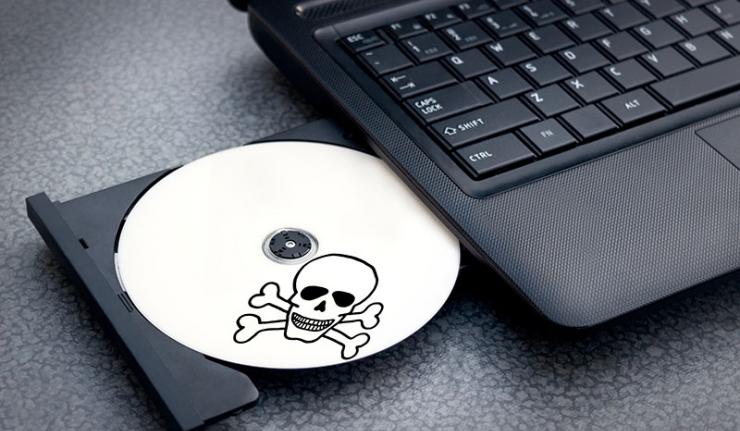
Unprecedented demand for fresh and relevant information has witnessed an unprecedented data growth over the past decade. This has attracted the ability to retain rights to intellectual data and the capability to protect that data with force. And as data continues to grow and be in demand, intellectual property and data privacy requirements demand more robust copy protection of that data.
Copy protection applications provide an ultimate solution to the needs of people in need of true privacy control and digital rights management. Strong copy protection software will allow you to protect your media files and other creative material from being illegally copied by unauthorized users.
The software, at least, be able to protect all media files including PDFs, Flash Files, MS Office Files, Videos, Images, and EXE files (application files), making such a software a complete data protection system that will preferably use advance level of steganographic technology, allowing you to benefit from a strong, easy to use and effective data protection against all kinds of illegal information tampering of your data.
Using cryptographic technology, copy protection helps you protect your media files and creative artwork from plagiarism, piracy, illegal distribution and copying. With the ease of duplicating CDs/DVDs and rampant piracy of digital media, protecting your files and data with a copy protection tool has becomes a critical.
The never ending struggle by musicians, digital artists, writers, and other such creative people with protection of their data, source files, and intellectual property many cause them further frustration with the eventual costs associated with legal representation. It is wise for artists to request their followers to support them and make legal purchases of copies for themselves instead of relying on illegal means.
Copy protection provides much needed relief to those who have been trying in vain to protect their material from being illegally copied. There are now strict laws against piracy and the DMCA further solidifies the protective grounds on which artists stand.
Specialized program that provides strong data copy protection and helps you to copy protect your creative work against all potential unauthorized copy attempts. You can start distributing your materials I a safe and secure way with a copy protection software, and you can share them with anyone without the allowing them to copy your song files in any way. You have total control over what rights need to be given to whom.
The basic function of a copy protection software is to allow you to convert your media files including your mp3, WMA and other audio files into a copy protected executable application (.EXE), which you can then burn onto CDs and DVDs for distribution. When burned to specific drives, the copy protection of the files in the CDs/DVDs immediately apply and the mechanism will only allow access to these copy protected files when run from the drives they were saved in. The copy protected files become completely useless if run from any other source or location.
You no longer have to worry about stolen material or from the fear of your valuable data being copied or duplicated without your permission.
Definition Of Illegal Distribution Of Data

Illegal distribution of data is the unauthorized sharing, copying, or distribution of data without permission from the rightful owner. It can include the transfer of data between two parties without the owner’s knowledge or consent, as well as the sale or trade of data without permission. Illegal distribution of data can be a breach of copyright, privacy, or security laws, and can result in criminal or civil penalties.
Reasons And Importance Of Defeating Illegal Data Distribution
Defeating illegal distribution of data is important because it helps protect the privacy and security of individuals and organizations. Unauthorized sharing of data can lead to identity theft, financial fraud, and other malicious activities. It can also damage the reputation of a company or organization, as well as lead to costly legal proceedings. By preventing illegal distribution of data, organizations can better protect their data and the privacy of their customers.
Types Of Illegal Data Distribution
1. Distribution of copyrighted material without permission from the copyright holder.
2. Distribution of trade secrets or other confidential information without permission from the owner of the information.
3. Distribution of personal data without permission from the individual whose data is being shared.
4. Distribution of false or misleading information.
5. Distribution of data that violates the privacy rights of others.
6. Distribution of data that could be used to commit fraud or other crimes.
Who Is Involved In Illegal Data Distribution
Individuals who are involved in illegal data distribution can include hackers, scammers, or other malicious actors. The penalties for engaging in illegal data distribution can vary depending on the severity of the crime and the jurisdiction in which it was committed. In some cases, the penalties may include fines, jail time, or other criminal penalties.
Common Methods Used To Distribute Illegally Obtained Data
Common methods used to distribute illegally obtained data include hacking, phishing, spreading malware, using malicious websites, and using peer-to-peer networks. Hackers may attempt to gain access to a computer system by exploiting its vulnerabilities, while scammers may use phishing techniques to obtain personal information from unsuspecting victims. Malware may be spread through malicious websites, while peer-to-peer networks may be used to share illegally obtained data.
Defeating Illegal Distribution Of Data In USA
The best way to combat illegal distribution of data in the U.S. is to strengthen laws and regulations that govern the use of data. This includes laws that protect the privacy of individuals and organizations, as well as laws that prohibit the unauthorized access and use of data. Additionally, organizations should ensure that their data is properly secured, and that appropriate measures are taken to prevent unauthorized access and use. Finally, organizations should use strong encryption techniques to protect their data and ensure that it cannot be accessed.
Laws To Prevent Illegal Data Distribution
In the U.S. include the Digital Millennium Copyright Act (DMCA) and the Computer Fraud and Abuse Act (CFAA). The DMCA protects copyright holders from the unauthorized distribution of their works, while the CFAA criminalizes the unauthorized access to a computer system. To prevent illegal data distribution in the U.S., organizations should implement measures such as secure authentication and authorization, data encryption, and firewalls to protect their networks and data.
Steps To Protect Your Data From Illegal Distribution
1. Implement secure authentication and authorization protocols to ensure only authorized users can access your data.
2. Use data encryption to protect your data from unauthorized access.
3. Implement firewalls to protect your network from malicious actors.
4. Monitor your network for suspicious activity and respond quickly to any potential threats.
5. Regularly update your security software and patch any vulnerabilities.
6. Educate your users on the importance of data security and the consequences of unauthorized access.
7. Establish policies and procedures for the secure handling of data.
8. Establish a process for securely disposing of data when it is no longer needed.
9. Utilize two-factor authentication to protect access to sensitive data.
10. Utilize data loss prevention solutions to prevent the unauthorized transmission of data.
Benefits Of Preventing Illegal Data Distribution
The most basic benefit of preventing illegal data distribution is the protection of sensitive information. This is particularly important for businesses, as it can help to prevent the theft of trade secrets or other confidential information. Additionally, preventing illegal data distribution can help to protect the privacy of customers and employees, as well as protect the company’s reputation. Finally, preventing illegal data distribution can also help to ensure compliance with applicable regulations and laws.
How To Report Illegal Data Distribution
If you are aware of illegal data distribution, it is important to report it to the appropriate authorities. Depending on the type of data involved, this may include law enforcement, the Federal Trade Commission, or another relevant agency. Additionally, it is important to contact the organization where the data originated to inform them of the illegal activity. Finally, it is important to document the incident and provide as much information as possible to the authorities.
